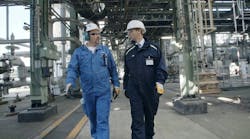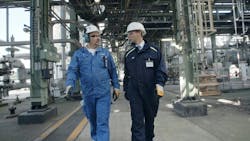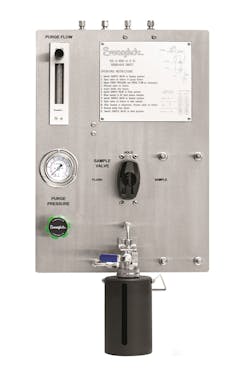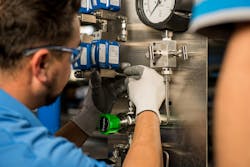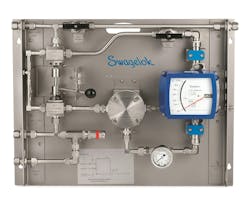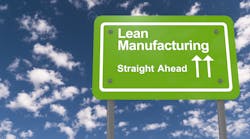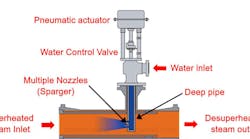How to Make Your Plant Turnaround Smooth and Effective
The decision to do a plant turnaround is not one made lightly. Chemical plants and refineries across the globe undergo these challenging projects with the help of hundreds of technicians from multiple vendors working on different parts of the plant at the same time. Whether the work involves maintaining, revamping, or renewing a specific system or an entire plant, coordinating the various disciplines and their efforts can be daunting.
One of the most complicated aspects of a plant turnaround is stopping production completely while the work is being done. Since any system downtime results in lost revenue, most plant owners and operators will want to do the job as quickly as possible without sacrificing quality. Longer-duration turnarounds keep contractors on-site and can add costs and risks to the project.
In larger plants, proper plant turnarounds may require years of foresight and planning because of the enormous investment of time and money. Therefore, making sure the turnaround runs smoothly is essential.
Suppliers are operating differently since 2020, and your procurement process should change to include the following seven steps:
1. Engage Early With Trusted Suppliers
Deciding to engage in a plant turnaround is not a spur-of-the-moment determination. Sometimes, the planning begins years before a vendor steps foot in the plant. The reason for such extensive planning is to anticipate as many scenarios as possible and have contingency plans to deal with them.
To make sure a plant turnaround starts properly, owners should reach out to critical parts and service suppliers early in the planning process. (Figure 1). Industrial fluid systems often require highly specific parts and components, which may have extended lead times to acquire. Engaging with component suppliers early can ensure you have the necessary parts on hand for installation.
2. Identify Areas of New Opportunity
Another reason to engage early with trusted vendors is to identify potential areas where systems can be improved, resulting in higher reliability and better performance. Understanding where these opportunities are before work begins can provide a road map to a successful operation.
Working closely with vendors early on can improve the pre-planning involved in the turnaround and can lead to innovative solutions. Doing so also helps to ensure there's adequate lead time to secure approval from ownership, while also minimizing the chance of running afoul of management of change (MOC) requirements. Finally, vendors will assess your system without preconceived notions of how the system currently works. This “fresh eyes” approach from experts can lead to previously unrealized enhancements.
One possible enhancement might be using pre-engineered and preassembled grab sampling panels. Practically speaking, this approach can improve system performance without fundamentally changing the overall design. Additionally, such preconfigured panels make it easier for technicians to collect necessary samples properly (Figure 2).
3. Be Prepared for the Unexpected
Though it is impossible to account for every contingency and variable, proper planning allows early identification of solutions for the most common roadblocks in a turnaround. Having potential solutions in place allows the project to proceed more efficiently.
Depending on the size and complexity of the fluid system, it can be beneficial to stock a variety of hoses, valves, and adapters before revamping the entire system. Practically speaking, it could be any system component that needs to be replaced, so having the right components on-site will streamline the replacement process. It means less time waiting for components to arrive from vendors and more time installing on-site parts.
To avoid overstocking components and ending up with unused inventory, some suppliers may offer opportunities to stock temporary or consignment inventory with them to ensure the parts are always available when you need them (Figure 3). If your vendor is willing to set up such a program, you will only pay for the actual parts used instead of paying for unused parts on a shelf.
4. Ensure the Availability of Local Support
Even the best-planned plant turnaround will experience unexpected challenges, and the facility may not have the right parts when they are needed. A best practice to follow is to talk to your vendors ahead of time to determine whether they have local support (Figure 4) that can help supply parts quickly to handle any unforeseen problems during project execution.
5. Keep a Close Eye on the Installation of Critical Parts
Any plant turnaround may include hundreds of technicians from various firms and disciplines. It can be even more complicated if the vendors overseas are international. Unless you set your own standards of installation knowledge, the resulting mix of skill and technical expertise may vary.
It's unacceptable to allow workers with significant skill variances on plant turnarounds because poorly installed components will lead to larger problems down the road. To avoid installation problems, owners and operators should require specific training and certification in the scope of work. By insisting everyone working on the project meets basic standards, the technicians will likely be well-versed in sound installation best practices.
6. Seek Out Prefabricated Assemblies
When possible, use prefabricated, preassembled, and pretested assemblies to reduce the engineering complexity of industrial fluid systems in your turnaround project. These systems are easier to install efficiently and can take the guesswork out of installations.
Additionally, using prefabricated assemblies can reduce installation time, as well as concerns about the technical expertise of the installers. Grab sampling panels are one good area of opportunity, allowing for safe, efficient sample capture while meeting specific plant application needs. Elsewhere, mechanical seal support systems can help increase mechanical seal longevity (Figure 5). Analytical subsystems, including fast loops (Figure 6), field stations, calibration and switching modules, sample probes, and fluid distribution headers, can bring efficiency and consistency to your operations, with simplified design footprints.
7. Maintain Tight Quality Control
With all the moving parts involved in an effective plant turnaround, owners and operators should control the quality and consistency of the components used. Precise specifications prevent contractors from cutting corners and using lower-quality parts. They also help to prevent the intermixing of product components, which can lead to uneven performance, early maintenance problems, or unexpected downtime once the turnaround is complete. Making sure your component specifications are precise and up to date means only high-quality components will be used in your mission-critical fluid systems. Doing so will save you time and money in the future because coherent systems are easier to maintain consistently.
Preparing For a Successful Turnaround
Using these seven tips as a road map for chemical plant or refinery owners and operators to follow will lead to quicker, more effective turnarounds while enhancing overall system performance and reliability. If your vendors have field engineering teams, consult with them when planning a turnaround because their expertise and experience may prevent unnecessary roadblocks to performing a successful plant turnaround.










